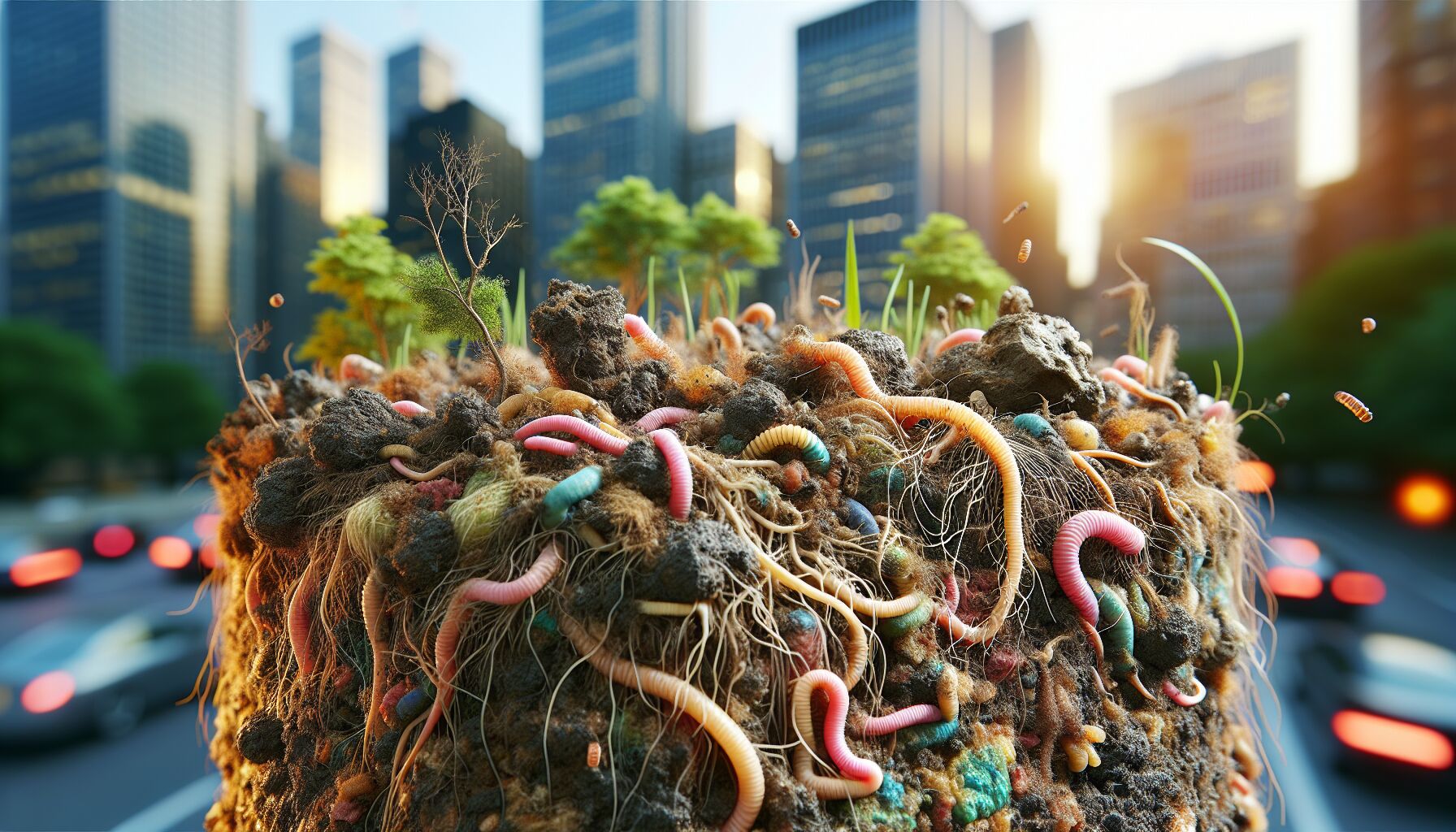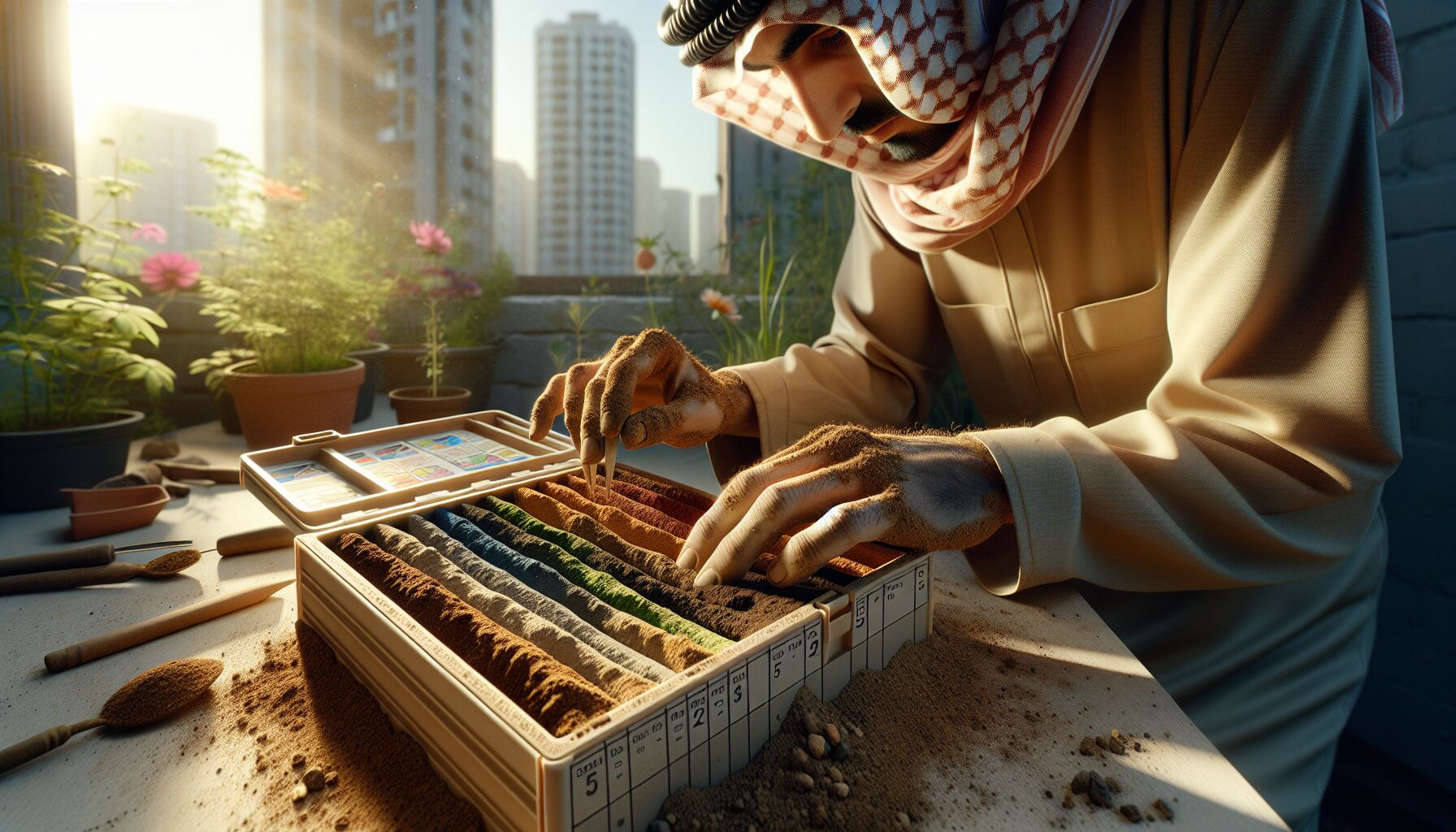 Urban soil dynamics might sound like something out of a textbook, but understanding its ins and outs can make all the difference for your garden. Just think about it: city soil isn’t that rich, dark earth from the countryside. It’s tricky — a blend of leftover construction materials, compacted layers, and maybe a sprinkle of street debris for good measure. Now, this isn’t just an interesting bit of trivia. The way we manage the soil beneath our feet profoundly impacts the food quality sprouting in our backyards, terraces, or little community plots.
Urban soil dynamics might sound like something out of a textbook, but understanding its ins and outs can make all the difference for your garden. Just think about it: city soil isn’t that rich, dark earth from the countryside. It’s tricky — a blend of leftover construction materials, compacted layers, and maybe a sprinkle of street debris for good measure. Now, this isn’t just an interesting bit of trivia. The way we manage the soil beneath our feet profoundly impacts the food quality sprouting in our backyards, terraces, or little community plots.
Urban soil often faces problems like contamination and poor fertility. Think about all the wear and tear cities endure. Heavy machinery, foot traffic, and pollution leave their mark, packing down the earth and hindering those tiny roots from getting the air and water they need. And let’s not forget about lead, one of the more notorious urban soil contaminants, lurking thanks to years of leaded gasoline and old paint. It’s like trying to grow veggies in a sandbox that’s been through a rough couple of decades — not ideal, right?
But here’s an uplifting nugget: soil regeneration isn’t some mythical green thumb magic. It’s achievable and rewarding. It’s about breathing life back into the ground, nurturing a living system that can sustain plants and, by extension, us. Composting is a lifesaver here; it’s like giving the soil a multivitamin shot, enriching it with organic material that boosts fertility. Healthy soil teems with life — worms, microbes, and all those unseen creatures working round the clock to break down matter and keep things in balance.
Getting to know the rhythms of your piece of earth, the unique dance it performs among buildings and bustling streets, fosters a profound connection. It sharpens our awareness, inviting us to pay attention — not just to the plants above ground but to the unseen forces below. As Wendell Berry beautifully put it, “The soil is the great connector of lives, the source and destination of all.” How we treat it echoes in the nourishment our gardens provide.
So next time you step out onto your urban garden patch, take a moment. Feel the quiet resilience of the soil, a reminder of nature’s persistence and our role in stewarding its regeneration. There’s a whole world in that handful of dirt, waiting for us to notice its quiet potential. And once we do, the rest — lush plants, bountiful harvests, a healthier urban environment — follows effortlessly.
Implementing sustainable gardening practices
Sustainable gardening in urban areas, huh? Now that’s a concept worth getting our hands dirty for. When we think about nurturing a garden amidst skyscrapers and traffic, it might sound like a paradox. Yet, it’s a dance of nature with concrete where healthy practices aren’t just possible—they’re essential for thriving greenery and vibrant communities.
First, we gotta think about composting. Picture it as feeding your garden a feast of nutrients. Organic scraps — those veggie peels and coffee grounds — they come together to give back to the soil what we’ve taken. When they decompose, they transform into rich humus, like the earth’s own nutrient-dense smoothie. But wait, there’s more: composting isn’t just about feeding plants; it’s about soil regeneration, something the urban landscape craves.
Next, let’s chat about mulching. A simple yet impactful practice; it’s like tucking your garden into a cozy blanket. Mulch retains moisture, reduces erosion, and keeps those pesky weeds from crashing the garden party. Plus, as mulch breaks down, it’s a slow-release buffet for your garden beds. And, ever considered living mulch, like clover or vetch? They’re ally forces, fixing nitrogen and supporting soil life.
Alright, so rooftop and community gardens — we’re seeing these sprouts of greenery popping up more and more. They’re not just pretty; they’re functional ecosystems offering life support to urban soil. By minimizing impervious surfaces like asphalt, these gardens improve drainage and reduce heat, making way for healthier urban settings. And here’s the kicker: they provide spaces where communities can come together, reminding us of, as Aldo Leopold once mused, “The land ethic… enlarges the boundaries of the community to include soils, waters, plants, and animals.”
Let’s not forget about collective efforts. Urban gardening isn’t meant to be a one-person band. Sharing seeds, swapping knowledge, or visiting community compost exchanges like ShareWaste fosters collaboration. Plus, imagine crowdsourcing materials and tools — it’s thrifty and keeps unnecessary waste from languishing in garages.
Oh, and here’s a thought: utilizing native plants. City life can be rough on plants, but natives? They’re the hometown heroes, naturally adapted to local conditions. They’re resilient against pests and require less pampering, allowing the garden to flourish with minimal intervention.
And while we’re minding the skin of the earth, remember to test it. Even a humble kit from NRCS helps reveal the true condition of urban soil, offering insight into pH levels, nutrient content, and more. Unlocking these secrets ensures gardens are off to a solid start, producing food that’s not just bountiful, but high in food quality.
In essence, urban gardening is a reminder of the beautiful symbiosis between people and the planet. It’s about taking small, meaningful actions that echo in the broader tapestry of nature. And really — isn’t that what gardening’s all about? Enabling life to flourish, in whatever nook or cranny it finds itself discovering its potential.
Overcoming common urban soil obstacles
 When confronted with the perplexities of urban soil, the first hurdle often lies in acknowledging what we’re dealing with. It’s a medley of unpredictability — contaminated patches, compacted earth, clay-heavy textures, or sandy barren stretches. The seemingly innocuous dirt beneath our feet can be deceptive. But rather than see this as a mere obstacle, why not as an invitation to deepen our understanding of the intricate dance beneath the surface? This brings us to our companions in this quest: using soil testing kits to unearth the mysteries within.
When confronted with the perplexities of urban soil, the first hurdle often lies in acknowledging what we’re dealing with. It’s a medley of unpredictability — contaminated patches, compacted earth, clay-heavy textures, or sandy barren stretches. The seemingly innocuous dirt beneath our feet can be deceptive. But rather than see this as a mere obstacle, why not as an invitation to deepen our understanding of the intricate dance beneath the surface? This brings us to our companions in this quest: using soil testing kits to unearth the mysteries within.
Just as a chef needs to know the quality of ingredients before whipping up a dish, understanding your soil’s composition is key. Kits from places like the NRCS can unveil the secret life of your soil, letting you tailor your amendments with precision — fertilizing not just what’s there but what truly thrives. So, why should this matter to you? Well, the ability to pinpoint what’s missing or in surplus can be the difference between a lackluster garden and a flourishing one.
But let’s not put all our eggs in the soil testing basket. Take the challenge of compacted earth, an unwelcome gift from the construction and footsteps that urban soil bears. This earth might as well be stamped with a “keep out” sign for roots seeking to stretch and grow. To breathe life back into such soil, consider the gentle art of aeration. By using a garden fork to introduce air pockets or applying gypsum to clay-heavy territories, we disrupt the hardened narrative that has settled over our garden’s potential.
Now, you might be thinking — what about the infamous toxic soil narratives? Heavy metals like lead can cast a shadow over urban soil, particularly where older structures once stood. Here, raised beds become our havens, offering a sanctuary you can fill with imported, clean soil. Couple that with barrier layers beneath, such as landscape fabric, and our plants are free to flourish without the specter of contamination.
Let’s not overlook the power of bioremediation as a beacon of hope. Certain plants have a knack for soaking up toxins, referred to affectionately as phytoremediators. Sunflowers and willows can dance with pollutants, reducing their harmful hold on our soil.
But prevention trumps cure — minimizing soil disturbance and covering exposed patches hampers erosion and maintains its health. Because at its core, preserving urban soil is akin to tending to a delicate ecosystem, where each action resonates broadly. As we bring awareness to how we affect soil’s vitality, we inadvertently elevate food quality in our urban farms. As Rachel Carson once noted, “In nature nothing exists alone.”
With all this in mind, maybe the epitome of urban gardening isn’t the absence of challenges, but the transformative journey through them. Every spade of earth turned, every layer enriched, brings us a tad closer to a balanced ecosystem that celebrates nature’s resilience and our enduring relationship with it. Urban soil is restless, yes, but it holds promises for those willing to nurture its potential.
 DS Haven In Light Of Things
DS Haven In Light Of Things





